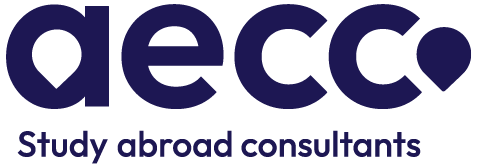Read on to get your latest updates on Universities, Courses Offered, Student Visa Updates, and lots more!


In Canada, there are two main categories of colleges that international students often consider: SDS (Student Direct Stream) and Non-SDS. The SDS, formerly known as the Students Partner Program (SPP), is an initiative by Canadian Immigration Authorities that streamlines the visa application process for students. This program is designed to make the process of students receiving their Canadian Study Visa more efficient. However, it's important to note that only students from certain countries, including India and Brazil, are eligible for the SDS.
On the other hand, Non-SDS, often referred to as the General Category, is another method of applying for study in Canada. This is a general visa application process that helps those candidates who cannot meet the visa requirements to study and work temporarily in Canada. The Non-SDS colleges require more paperwork while the application process is quite the same.
Both SDS and Non-SDS Canadian colleges have their own set of requirements and processes, and choosing between them depends on the individual circumstances of the student. It's crucial to understand these differences when planning higher education in Canada.Students Partner Program (SPP), also known as SDS (Student Direct Stream), is an initiative of the Immigration Services of Canada. Student Direct Stream is the fastest approach for international students to apply directly to pursue education in Canada. There are specific requirements for students to fulfil, and then they can apply only through an online medium. The Immigration Refugees Citizenship of Canada sets the conditions under the Student Direct Stream.
Related Read:
SDS Colleges in Canada
The international students who were not able to fulfil the requirements of Student Direct Stream can avail of the non-SDS option, which is a standard visa application process to get a Temporary Residency in Canada. The requisites tend to differ as this route also requires more documents.
The Student Direct Stream (SDS) and Non-SDS pathways for Canada Student Visa applications each have unique processing times. These timescales, along with their respective requirements and advantages, are key factors to consider for a successful application. A clear picture of these differences can streamline your Canada Student Visa application process.
SDS Visa Processing Time: The Student Direct Stream (SDS) visa applications are usually processed within 20 calendar days. This streamlined process is designed to make visa processing quicker and more efficient for international students.
Non-SDS Visa Processing Time: The Non-SDS visa, also known as the General Visa process, typically takes longer. The average processing time for a Non-SDS Visa is around 6 to 8 weeks. This process applies to all countries and requires more documentation.The language proficiency prerequisites for SDS and Non-SDS Canadian colleges are vital components of the application process. These requirements, which may vary between the two pathways, play a significant role in determining eligibility for admission. A thorough understanding of these criteria can help prospective students prepare effectively for their journey to studying in Canada.
SDS Language Proficiency Requirements: For SDS colleges, students must qualify for an English Proficiency Test, such as IELTS Academic or IELTS General, with a minimum score of 6.0 in each section – Reading, Speaking, Writing and Listening. From August 10, 2023, an overall band score of 6.0 on IELTS Academic was also accepted.
For Non-SDS colleges, students need to clear a language capability test such as IELTS, PTE, or TOEFL. The required score is generally 6.0 with at least 5.5 in one module of the paper. For Undergraduate programs, the IELTS score should be 6.0 and for Postgraduate programs, it should be 6.5.
Related Read:
How to get Canada Student Visa Approval for SDS Category
Financial requirements and proof of funds are critical aspects of the Canada Student Visa application process. These elements demonstrate a candidate's financial stability and ability to support themselves while studying in Canada. Grasping these requirements can help ensure a successful visa application and a worry-free study experience.
The admission and acceptance rates for SDS and Non-SDS pathways can provide valuable insights into the competitiveness of the Canadian Universities' admission process. These rates, which may differ between the two, are key indicators of an applicant's chances of securing a place in a Canadian college. Understanding these rates can help prospective students make informed decisions about their study abroad plans.
SDS Admission and Acceptance Rates: The Student Direct Stream (SDS) has seen a high rate of approval. The approval rate was 71%, and it increased to 73% at the start of 2023. This high approval rate is one of the reasons for the popularity of the SDS among international students.
Non-SDS Admission and Acceptance Rates: The Non-SDS, or General Visa process, has a lower approval rate compared to SDS. The approval rate for Non-SDS applicants was around 40% and it dipped to 14% at the start of 2023. Despite the lower approval rate, Non-SDS remains an important option for students who do not meet the SDS requirements.
Eligibility and accessibility, particularly in terms of country-specific limitations, are crucial factors in the Canada Visa application process. These limitations can affect an applicant's ability to access certain pathways, such as SDS or Non-SDS. Being aware of these restrictions can help applicants choose the most suitable pathway for their specific circumstances.
SDS Eligibility and Accessibility: The Student Direct Stream (SDS) is available to eligible students from specific countries, including India, China, Brazil and others. These students must meet specific requirements set by Immigration, Refugees and Citizenship Canada (IRCC) to study in Canada.
Non-SDS Eligibility and Accessibility: Non-SDS or the General Visa process, applies to all countries. It's a more extensive process and has more documentation requirements compared to SDS.The candidate must fill out the application online for a fast study permit process. There is no paper application for SDS. Therefore, one should make sure to align all your documents. The following checklist must be considered:
Quick Read:
Know More About Canada Work Permit
Now, one has become familiar with the primary difference between Student Direct Stream and the Non-SDS; the following can be said as the main reasons why an SDS approach is considered better than the Non-SDS for a visa application.
If an applicant cannot meet the financial requirements of SDS, they can apply for a non-SDS visa for Canada. Here, you can rest assured that you can obtain all the relevant information on non-SDS in Canada, non-SDS meaning, and non-SDS band requirements. The non-SDS success rate is relatively low than the SDS category. This is because the number of documents is less in SDS than in non-SDS. As per the IRCC, the SDS success rate was 71%, whereas, for the non-SDS applicants, it was 40%.
Both SDS and Non-SDS colleges in Canada offer unique opportunities for international students. While SDS provides a streamlined visa process for students from specific countries, Non-SDS offers a more general approach that is accessible to all. The choice between SDS and Non-SDS ultimately depends on the individual student's circumstances and goals for studying in Canada.
Start your Canadian education journey with AECC where the choice between SDS and Non-SDS colleges can be made with ease.
The non-SDS colleges provide admission to students who apply for a Canadian work permit through the standardised process.
Language Proficiency Test, travel document, Guaranteed Investment Certificate (GEC) etc. are a few requirements for non-SDS.
SDS colleges are those that come with DLI numbers and accept students applying under the SDS visa program.

Test Preparation
Premium Counselling
Get in Touch
About Us
Our Partners
Quick Links
Book your FREE consultation with Certified Counsellors